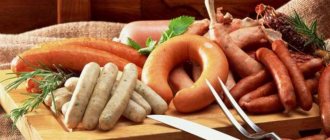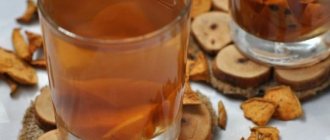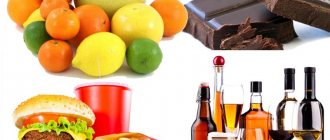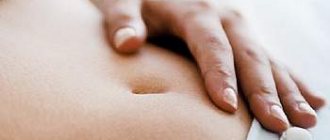Author:
gastroenterologist Anton Smirnov
4 minutes
3970
During breastfeeding, a woman may feel hungry much more often and stronger than usual, and this is normal. The process of making breast milk in the body increases daily energy requirements by about 500 calories. There is also an increased need for specific nutrients such as protein, vitamins D, A, E, C and B12, selenium and zinc.
Here are some healthy and tasty foods that you should include in your diet while breastfeeding, provided that you have no contraindications to them:
- Fish and seafood: salmon, seaweed, shellfish, sardines;
- Meat and poultry: chicken, beef, lamb, pork, liver;
- Fruits and vegetables: berries, tomatoes, sweet peppers, kale, garlic, broccoli;
- Nuts and seeds: almonds, walnuts, chia, flax and hemp seeds;
- Healthy fats: avocado, olive oil, coconut, eggs, full-fat yogurt;
- Fiber-rich starches: potatoes, butternut squash, sweet potatoes, beans, lentils, oats, quinoa, buckwheat. Note that it is recommended to introduce legumes into your diet no earlier than the baby turns three months old in order to avoid problems with excess gas formation;
- Other foods: tofu, dark chocolate, kimchi, sauerkraut.
It is also worth minimizing your consumption of fast food and sugary breakfast cereals, which can be replaced with muesli and granola, for example.
The benefits of vitamin D for breastfeeding women
Breastfeeding women have an increased need for vitamins and microelements; a significant amount of these substances, along with milk, is transferred to the newborn baby. Therefore, it is necessary to replenish their reserves daily. Research shows that the average breastfeeding mother loses 4 times more vitamin D than during pregnancy.
The benefit of the vitamin for women is to maintain bone mineral density. After the birth of a child, the secretion of the hormone prolactin increases in a nursing mother. It suppresses ovarian function and the production of estrogen, which is involved in maintaining calcium in the bones. At the same time, prolactin stimulates the synthesis of parathyroid hormone. It activates osteoclast cells in long bones and increases the flow of calcium into the blood by destroying tissue.
Women who take vitamin D in the daily dosage recommended for nursing maintain physiological calcium concentrations and can avoid pain in the limbs and deterioration of teeth.
Is it possible to eat pita bread while breastfeeding in the first month?
Proper nutrition during breastfeeding is the key to successful lactation, rapid recovery of a woman after childbirth, and normal development and growth of the newborn.
This does not mean that mom should go on a strict diet. You only need to adhere to a strict regime for the first three to four weeks after the baby is born.
Then new products are gradually introduced into the diet of the nursing mother, but at the same time you should carefully monitor the well-being and reaction of the baby and follow the recommendations.
Every mother knows that the food she eats passes into breast milk. And then the food components, along with the milk, enter the baby’s body. During the first few months, the baby’s digestion is just getting used to the new conditions. Often new food leads to severe colic, flatulence, allergies and other troubles.
Principles of nutrition during breastfeeding
- The diet of a nursing mother should contain a full range of vitamins and beneficial elements. Be sure to eat fish and meat, dairy and fermented milk products, fruits and vegetables. You can't go on a strict diet to lose weight! Such a diet will lead to health problems for the woman and the newborn;
- Meal frequency is five times a day. The menu for a nursing mother includes three main meals and two snacks. It is important to avoid overeating or undereating;
- Don't abuse it! This principle is partly related to the previous one. Overeating causes bloating and severe colic in the baby, stomach upset in the mother, and disrupts bowel movements. Even a safe product in excess leads to a negative reaction. A reasonable approach is the fundamental rule that shapes a woman’s nutrition when breastfeeding;
- When preparing dishes, give preference to stewing, baking or steaming. Fresh fruits can be eaten with caution even after two to three months after the birth of the child. Heat treatment promotes easy digestion of food, while it retains its beneficial properties;
- In the first month, follow a strict diet, exclude from the nursing mother’s menu foods that contain allergens and foods that can cause digestive disorders in the newborn;
- From the second month, new foods are introduced into the diet of a nursing mother. For the first time, try a small piece of food and monitor the child’s well-being for two days. If there are no negative consequences, the food can be eaten without fear. If the baby has an allergy or digestive problems, reduce the dose or delay administration for a month;
- Don't try several new products at the same time! It is important to know what food a newborn reacts to;
- Limit the consumption of fried, too salty, spicy and fatty foods, flour and sweets. Choose fermented milk and dairy products without additives and with low fat content;
- The menu for a nursing mother should not include processed foods, preservatives or other chemicals! Such food will lead to digestive disorders and intoxication;
- When breastfeeding, forget about alcohol. Alcoholic drinks poison the body of the baby and mother, inhibit the development of the baby and provoke diseases of the heart, blood vessels, and nerve cells;
- If there is a lack of vitamins, take special complexes for nursing mothers that are compatible with lactation and safe for babies. Read here which vitamin complexes are suitable for breastfeeding mothers;
- Drink more. Warm, abundant drinking cleanses the body, helps with viruses and enhances lactation. The minimum daily volume of liquid is two liters, taking into account that half of the volume is drinking water. A nursing mother's diet should include soups and broths, natural juices and compotes.
Spicy food while breastfeeding - Mom's news
After giving birth, some women's taste preferences change, but for most they remain the same as they were before pregnancy.
Spicy food during breastfeeding is considered completely prohibited and many “old school” nutritionists insist on this, but is everything so clear? In this article we will try to understand this issue, and also give examples of situations when spicy food should really be avoided.
Why spicy food is not recommended during breastfeeding
Surely you have more than once come across information that hot and spicy foods should be excluded both during pregnancy and lactation. But what could cause such a ban?
The fact is that the foods that a young mother eats also pass into breast milk to a small extent; of course, their volume is negligible, but their content can affect your baby.
The baby's digestive system is not yet sufficiently developed and therefore some types of foods that enter his body through milk can cause a number of problems.
In addition, it has been scientifically proven that hot and spicy foods in some cases cause heartburn and increase acidity in the stomach. If in ordinary life this only causes discomfort, then during the period after childbirth, when your body is recovering, it is better not to rely on such products, so as not to injure the body even more.
Is it possible to eat spicy foods while breastfeeding?
In principle, if such food is eaten in moderation, then it can be allowed during breastfeeding.
It must be remembered that this period does not mean that you must follow a strict diet consisting of two or three types of foods.
What you eat passes into breast milk in very small quantities, and therefore the chance that it will cause any negative reaction in your little one is minimal.
However, be aware of the fact that spicy foods can change the taste of your milk. The baby may like this or, on the contrary, cause him to be rejected; everything is individual here.
Does spicy food cause discomfort in a baby?
It is believed that some foods can cause colic in infants. As a rule, these are fatty, too spicy (red curry or chili) and overly salted foods. It's really best to avoid these foods if you're breastfeeding.
Typically, if your baby doesn't like a new food you've tried that has changed the taste of the milk, he or she will behave unusually and cry. This is why you need to stick to the trial and error method when breastfeeding. Whenever you try something hot or spicy, monitor your baby's behavior.
You should discard the product if you notice one or more of the following signs:
- Irritability.
- Rash or spots on the skin.
- Non-stop crying.
- Excessive fussiness after feeding.
- Breast refusal.
- Change in bowel movements, mucus, diarrhea, or bloating.
These signs may indicate that the mother is not eating properly. It is likely that your child is sensitive to hot and spicy foods. Or it could be a manifestation of an allergic reaction to one of the ingredients in the dish.
That is why you should gradually eliminate each of them and monitor your baby. If the negative reaction passes, it means that the problematic product has been found and it is better not to eat it for now.
Garlic and breastfeeding
Garlic has long been used as a product that increases the amount of breast milk produced, and is therefore classified as a lactogen. Scientific studies indicate that infants tend to eat longer and in larger quantities if mother's milk has a garlic component.
However, we should not forget about possible allergies or individual intolerances - watch for the signs that we have given above. By the way, don’t worry that the taste of your milk will change greatly because of the garlic - no, there will only be a slight garlic note in breast milk, and it itself will remain as sweet as before.
Negative effects of spicy foods while breastfeeding
Despite a fairly significant number of advantages, there are also a number of negative points. For example, these are the above-mentioned heartburn and increased acidity, as well as dyspepsia.
Source: https://mam-ya-sam.ru/grudnoe-moloko/chipsy-pri-gv.html
The role of vitamin D in infant development
The required concentration of this substance in the body is achieved several months after birth. Premature babies have even less of it, so recovery takes longer.
Sufficient vitamin D content ensures:
- normal calcium-phosphorus metabolism;
- growth and development of bone tissue;
- muscle development;
- strong immunity;
- supporting the thyroid gland;
- normal blood clotting;
- regulation of heart contractions.
It also prevents the occurrence of autoimmune diseases. It is also important for mental development. Vitamin D is responsible for the development of cognitive functions and their further maintenance. If during the period of active growth the body does not receive enough of this substance, the child will suffer from rickets. This is a disorder of osteogenesis (bone development) associated with a lack of minerals - mainly calcium and phosphorus.
Symptoms appear at three to four months of age. Parents pay attention to:
- general restless behavior;
- sleep disorders;
- heightened reactions to volume and brightness;
- skin redness;
- sweating;
- itching of the scalp;
- decreased appetite;
- digestive disorders.
Advanced rickets slows down the development of the musculoskeletal system. The child begins to hold his head up, sit and walk later than his peers. Delayed teething. The disease also affects the appearance of the baby. The most well-known symptom is a fontanel that does not heal on time. The child may have a flat back of the head and a wide forehead, bowed legs, thickening of the arms and a deformed chest.
Vitamin D norm
The need for the vitamin varies depending on its initial level in the blood, type of diet and time spent in the open sun. It is recommended to take 400 mg per day for infants under 6 months, but the maximum allowable dose is 1000 mg. Children after 6 months. The recommended dose of the vitamin does not change, but the maximum amount is increased to 1500 mg. For lactating women, an intake of 800 mg is considered normal, the maximum dosage per day, bordering on toxic, is 4000 mg.
To determine the need for calciferol, you can take a special blood test. The normal level of vitamin D content for an adult is 60-100 ng/ml, when using other measurement methods - 150-250 nmol/l. If you do not adhere to the recommended standards, a nursing woman’s baby will be the first to suffer. He will have the consequences of his rickets for the rest of his life.
The musculoskeletal system of an adult will be fragile and weakened. This causes difficulty walking, pain in the limbs, and brittle bones. Rickets also affects body composition:
- short stature;
- incorrect posture;
- pronounced parietal and frontal tubercles;
- chest flattened on the sides;
- narrowed pelvis.
Lumps in the wrist area may disappear as you heal. But mobility problems can only get worse with age. In especially severe cases, patients stop walking due to severe pain. Untreated rickets is fraught with seizures in adolescence and adulthood. Sometimes they cause respiratory arrest.
Is it possible for a nursing mother to have lavash?
Flour products in limited quantities are tasty and healthy for anyone, even for young mothers, but what about those who feed the baby?
Recently, it has become fashionable to eat yeast-free bread while breastfeeding, because it is not as harmful as regular bread and is prepared with natural sourdough, consisting of water and flour. The absence of yeast in its composition attracts lovers of a healthy lifestyle, among whom there are many nursing mothers, for whom it is important to know whether this product is safe for the child.
The history of the appearance of yeast-free bread stretches back to ancient times, when there was no yeast. It was then that this type of leaven began to be used for the first time, from which the first types of bread were obtained.
In the modern world, a large number of bread making technologies have appeared, but many people, including a number of specialists, believe that it is this ancient technique that is most useful and safe for the body.
This is due to the fact that such bread was made exclusively by women, who, as is known, had many children. They breastfed each of them for more than one year. This prompted the idea that yeast-free bread cannot bring any harm to women’s and children’s bodies.
The benefits of yeast-free bread for a nursing mother
The technology for making yeast-free bread is more useful compared to regular bread. As a result of baking, it becomes denser, which helps train the muscles of the gastrointestinal tract. Such bread is easier to digest, and the digestion process improves.
Yeast, which is used in regular bread, can affect the intestinal microflora. This can lead to dysbiosis; accordingly, their absence does not change the composition of a woman’s own intestinal bacteria.
The likelihood of dysbacteriosis is extremely negligible, since the temperature of the bread during baking is about 98°C, and the yeast that is used in the preparation of bread dies at 50°C.
The technology for preparing yeast-free bread allows it to retain the maximum amount of useful substances, such as magnesium, potassium, phosphorus, sodium and many others. Therefore, its use will be an excellent addition to the diet of a nursing woman.
This bread is perfect for mothers who have minor problems with the gastrointestinal tract, including gastritis and pancreatitis. For such women, it is not advisable to use regular bread based on yeast sourdough.
Types of yeast-free bread that can be used during lactation
One of the most common types of yeast-free bread is the well-known bread. Depending on the manufacturing technology, they can be thin or voluminous .
Thus, yeast-free bread retains the maximum amount of vitamins contained in the grain shell.
This type of yeast-free bread is not only allowed, but also very useful for a woman during breastfeeding and her child.
Does not contain yeast or lavash. When prepared correctly, eating pita bread by a nursing woman does not have any negative consequences.
Recently, bread made with yeast-free sourdough . In this technology, lactobacilli are used instead of yeast.
This bread has an excellent taste, but during production, the beneficial properties of lactobacilli are lost.
However, this does not make it less beneficial for the body of a nursing mother and child than any other yeast-free bread.
All types of yeast-free bread in moderation during breastfeeding will not cause any harm to health. But the best option would be bread made at home from natural and high-quality products. If it is not possible to bake yeast-free bread yourself, then you should choose the purchased one carefully, paying attention to the composition and date of manufacture of the product.
Negative characteristics of yeast-free bread for breastfeeding
Yeast-free bread has a small number of disadvantages compared to regular bread:
- Taste characteristics. After all, ordinary bread has a pleasant smell and excellent taste, unlike yeast-free bread, which has a specific taste.
- Yeast-based bread is softer and therefore more attractive to the buyer.
- Longer cooking time, making it not as common as regular yeast breads.
- The same volumes of ingredients produce less yeast-free bread, which is reflected in the cost.
Manufacturers often indicate that bread is yeast-free, although in fact, it is simply made using wild yeast, which in properties is no different from ordinary yeast. Therefore, you need to carefully study the composition before purchasing to make sure that it is truly yeast-free bread.
How to eat yeast-free baked goods while breastfeeding
You can eat yeast-free bread during breastfeeding from the first months of a child’s life. However, it should be included in the diet gradually so as not to cause digestive upset in the infant.
During breastfeeding, you should consume no more than 200 grams of yeast-free bread per day - in large quantities it can cause constipation.
From a medical point of view, yeast-free bread is more useful during breastfeeding. Its main advantage is that it has a beneficial effect on the digestive process of a nursing woman and baby. But you shouldn’t switch to it completely.
Source: https://feedjc.org/mozhno-li-lavash-kormjashhej-mame/
When should you take vitamin D?
A pregnant woman needs to take at least 800 IU of vitamin D per day to ensure an adequate supply for the baby. But not everyone has this opportunity. The reasons may be different:
- little sun in the region;
- dark skin, immune to its rays;
- gestational diabetes;
- excess weight;
- malnutrition.
Breastfeeding should be continued as long as possible. If a baby is diagnosed with vitamin D deficiency, the pediatrician will prescribe supplemental vitamin D supplementation. Most often, the vitamin is obtained from fish oil or infant formula. A nursing mother should consult a physician to select the required dosage for herself.
A pediatrician may prescribe aqueous solutions of the vitamin to a newborn if he notices the first signs of calciferol deficiency. This can be done without testing. It is recommended to drink drops if a child develops sweating at the back of the head, a slow rate of fontanel closure that does not correspond to his age, or if the baby shows increased irritability.
It is better when the baby receives it naturally. His body itself produces a useful substance when the skin comes into contact with the sun's rays. Therefore, you need to walk with babies every day and for at least an hour.
There is no need to hide the baby's face and hands from the sun. But at the same time, you should not allow overheating and go out into direct rays on a summer afternoon. At a comfortable temperature, sunbathing on the whole body is recommended.
The second natural source of vitamin D is mother's milk. But there should be enough of it in a woman’s body to provide for both herself and the child. You need to take care of this during pregnancy:
- walk in the sun;
- eat fish, cereals, eggs, cheese;
- drink milk and orange juice;
- take fish oil.
It is better for a woman to start from the first trimester, while all the basic body systems of the unborn baby are being formed. By the third trimester, his skeleton will actively accumulate calcium - you need to be prepared for this. Otherwise, a deficiency of vitamin D will be created in the mother’s body. This is dangerous not only for the child, but also for herself.
What is the plant useful for?
Ivan tea increases lactation. The rich composition of the herb contributes to this phenomenon:
- Vitamin C improves the functions of the immune system, protects the body from infections and viruses.
- The B group of vitamins has a beneficial effect on the functioning of almost all systems and organs.
- The following minerals are present: - calcium; - magnesium; - iron; — titanium; - boron They help improve metabolic processes and rid the body of toxins.
- Tannins add antibacterial and anti-inflammatory effects.
- Pectin and polysaccharides normalize metabolism and the functioning of the digestive system.
- Phytosterols reduce cholesterol levels in the blood.
- Amino acids fight stress and help the body produce the hormone of joy.
- Carotene restores immunity and improves tooth structure.
In addition, the plant does not contain caffeine or any other substances that are found in tea and coffee and have a negative effect on a woman and her child.
You can often hear other names for the plant - fireweed, Koporye tea. Ivan tea during breastfeeding helps not only normalize milk production, but also calm the baby. After all, the plant has a sedative effect, due to which the baby calms down and relaxes. A nursing mother can also brew the herb in case of postpartum depression or during times of stress. Ivan tea gives a woman energy and strength, improves the functioning of the central nervous system. It is often used as an anesthetic or antiseptic, because it does not have any negative effect on the baby, and for a young mother this is extremely important.
Is the use of the plant allowed for breastfeeding and how does it affect lactation?
There have been no clinical or laboratory studies on the benefits of fireweed tea during breastfeeding. But foreign and domestic pharmacology recommends Ivan tea for lactation, based on numerous reviews from nursing mothers.
The plant has many positive, including medicinal properties for women's health, and in addition has almost no contraindications or any side effects.
Traditional medicine recommended for nursing also contains recipes for decoctions or infusions based on fireweed. Although there is no official medical confirmation of the fact that lactation increases from the use of the herb. Ivan tea helps nursing mothers normalize their drinking regimen and increase the volume of milk produced, but it must be consumed quite carefully. It is also recommended to use the plant for the following symptoms during lactation:
- uterine bleeding;
- infection of the genitourinary system - cystitis, pyelonephritis or urethritis;
- diseases in the mouth - stomatitis, sore throat or sore throat;
- heart diseases;
- anemia caused by iron deficiency;
- headache;
- open wounds with purulent discharge, eczema.
You should not make too strong a decoction or drink healthy drinks every day. Due to the mild laxative effect of the plant, it should not be used by some women, and diarrhea may occur after a long period of using such decoctions.
Drinks made from fireweed should not be combined with taking sedatives, as they will enhance their effect.
How to take vitamin D while breastfeeding
Vitamin D is sold as a fat and water solution. It can have different structures, which determine its solubility in lipids. Vitamin D2 is primarily fat-soluble, so it can be taken in the form of fish oil. But this form of the drug can be dangerous. In a solution of fats, the vitamin enters the liver, where it can be deposited and gradually released into the blood. Sometimes its concentration reaches extreme values; it is impossible to control this process. Therefore, overdose symptoms easily occur.
Breastfeeding women and young children are recommended to take vitamin D3 in the form of an aqueous solution or in the form of Aquadetrim tablets. For some women with calcium deficiency, the doctor may prescribe a special complex.
Take the vitamin in a daily dosage once a day. It can be taken by all women who live in the middle climate zone from September to April. During this period, there is not enough sunlight, and solar activity is low, so that the skin synthesizes its own calciferol.
It is also possible to take a vitamin complex in the summer if there are changes in blood tests or other signs of deficiency. But in this case, careful dosage control is necessary to avoid complications and side effects.
What foods can a nursing mother eat on New Year's Day?
In our articles you can find out what a nursing mother can eat and what foods can cause a reaction in the baby. In general, most children do not react to their mother's food, but even if the baby is prone to reactions to some foods, in most cases you can choose a less allergenic substitute for the New Year's menu . For example, cow's milk can be replaced with goat's or vegetable milk. Chicken eggs can be replaced with quail eggs. It is also believed that in baking, 1 egg is equivalent to half a mashed banana, ¼ cup of applesauce, or 1 tablespoon of flax meal mixed with 3 tablespoons of water. And mayonnaise in salads can be replaced with natural yogurt or sour cream.
All products that you have not yet introduced into your diet, but are planning to afford for the New Year, it is better to try a little in advance so that New Year's Eve passes without unpleasant surprises. Try no more than one new product every few days.
Can a nursing mother drink champagne? How long will it take for the alcohol to leave the milk?
Contrary to popular belief, alcohol does not accumulate in milk, but is removed from it simultaneously with its removal from the blood. Therefore, expressing milk does not make sense; you just need to wait a certain time before feeding, which depends on the mother’s weight and the amount of drink. For example, one glass of champagne in a woman weighing 60 kg will be cleared from the blood in 2.5 hours. You can read more about this in our article.











